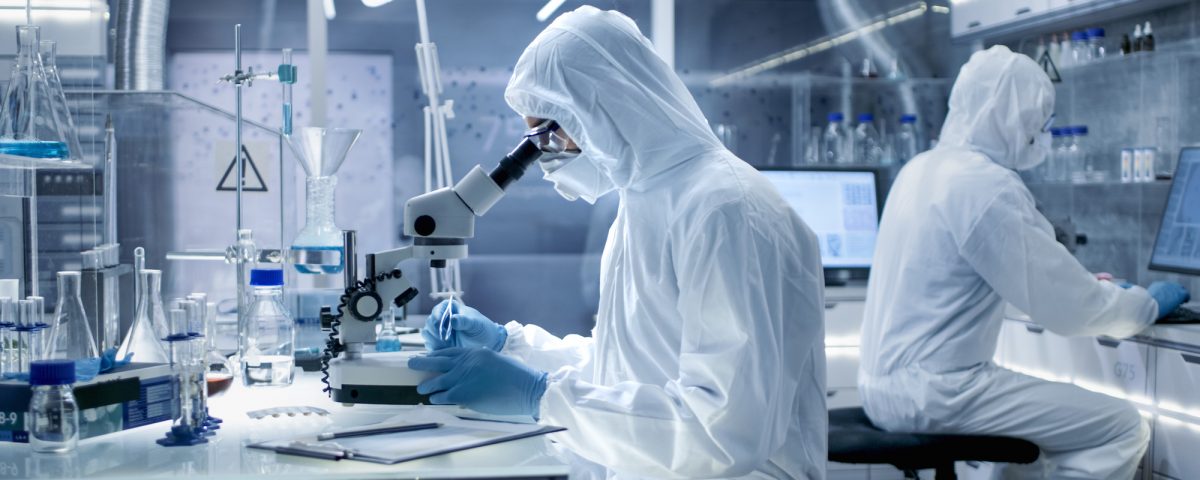
Campus Violence: Crying Wolf or Preparing Sensibly? – Issue 73
June 15, 2018
Data Breach Scheme Quarter 1 Scorecard: Issue 74
July 20, 2018by Harry Rosenthal, General Manager, Risk Management Services, Unimutual
Recently Melbourne played host to global experts in one of the most promising areas of biomedical science, stem cell research. The 2018 annual meeting of the International Society for Stem Cell Research (ISSCR) was hosted by the Australian Society for Stem Cell Research, and was dedicated to supporting and encouraging scientific exchange in the stem cell research community across Asia Pacific. The Australian Society for Stem Cell Research acts as a clearing house of scientific, medical and ethical advances in the broad field of stem cell research as well as playing a leading role in connecting the research community and the general public on stem cell topics. The conference was also attended by researchers from many Australian universities, many of which are Unimutual members who are committed to a collaborative approach to research.
Stem cells have commanded much attention in medical and scientific circles around the world in recent years. Many of us have heard about stem cell treatments for various maladies and these are just the early applications of the technology. The true potential of stem cells is yet to be realised and advancements are happening at a rapid rate. Like gene sequencing, CRISPER bioengineering, 3D printing of scaffolds and cellular reprogramming technology, stem cell research portends significant scientific breakthroughs. It offers almost unquantifiable potential to improve the length and quality of life for all on the planet.
The Australian Government is supportive of stem cell research, and as a result many of our researchers are taking a leading role in this exciting area of medical science.
Stem cells are found in most multicellular creatures, and by definition, are cells which can differentiate into other types of cells meaning they can be programmed to become a heart or liver cell, and to reproduce to form other, similar cells. They hold the key to producing new organs and tissues to relieve or replace diseased or worn out parts of our body. In spite of this potential reward, the road to researching the promise of stem cells has not been without problems. For example, early stem cell research identified that fetal material in mammals was the best location from which to harvest stem cells for research. This raised ethical issues and resulted in a ban in the US by then President George W. Bush in 2001 on all government funded human embryonic stem cell research. The ban was lifted by President Obama in 2009. Over time, it was learned that these fetal embryonic stems cells were not the only such cells capable of reprogramming and today much of the world’s most promising stem research is conducted with adult stem cells which are found in various tissues of mammals.
Regardless, the topic of stem cell research still ignites debate worldwide and scientific research into the use in treatment of stem cells is often regulated by law. These laws vary from country to country. The Australian Government is supportive of stem cell research, and as a result many of our researchers are taking a leading role in this exciting area of medical science.
While new discoveries are made regularly, it is the translation of these results to successful patient outcomes that is the ultimate objective however the importance of such benefits cannot be doubted and translational research is vitally important. Due to Australia’s jurisdiction, where such research is encouraged, several Unimutual Members have entered the world of translational medical research using the potential of stem cells. A couple of their stories are as follows.
Use of Stem Cells: stem cell regeneration to reduce back pain
Most people will suffer some type of lower back pain during their lives. For many, pain and discomfort is the result of biomechanical issues related to their spinal discs. These discs are unique structures, positioned between each bony vertebra and designed to act as shock absorbers. They also function as ligaments that hold the vertebra together as well as allowing for mobility in the spine. When these discs have problems, the result is often serious, debilitating pain and a pronounced lack of mobility. These discs can degenerate with age or from serious injury, and often result in desperate patients resorting to risky, invasive surgical procedures to obtain relief.
Monash University neurosurgery registrars Dr Charles Day (a Monash PhD candidate) and Dr Idrees Sher (a Monash University Master’s Candidate) are world leaders in this field. Their research and clinical work indicates in both preclinical and clinical studies, that stem cells have the potential to restore structure and function to old and damaged discs. This can reduce pain and improve quality of life for patients. They take two different directions in exploring the utility of stem cells to address back pain due to problems with spinal discs.
The research offers a promising opportunity for earlier intervention in lower back pain cases and hopes to one day delay the progression of spinal disc degeneration.
Unimutual has been supporting this research with the unique risk protection it offers in two areas. This research produces many biological samples and specimens which are stored in Monash University’s Temperature Controlled Environments. Unimutual has worked with the university to provide the necessary insurance products to protect these and other bio-medical samples, to ensure this research continues without interruption. Secondly, Unimutual extends its protection to the University’s highly specialised equipment critical to this type of research. Stem cell research, such as the work of Dr. Sher, requires state of the art instruments and specialised equipment to provide detailed images of the subtle changes in the spinal disc. For example, this award-winning stem cell research would have only been possible with Monash’s ownership of the super high resolution (9.4T) MRI equipment. A challenge to this class of research has always been in detecting subtle changes in tissues with MRI scans and this high-tech device, protected by Unimutual, has produced some the world’s first high quality images of the spinal discs in great detail.
So far Dr Sher’s research and its validation through sophisticated imagery shows that using stem cells as part of disc therapy, often results in improvements in the spinal disc itself. The research offers a promising opportunity for earlier intervention in lower back pain cases and hopes to one day delay the progression of spinal disc degeneration. While the results are still confined to the lab, Dr Sher believes they are extremely close to human trials, which will offer new treatment options for an age-old disorder and which will reduce the pain and suffering of millions with spinal disc problems.
Also focused on translating research results to actual patient treatment, is the work of Dr Daly, whose approach is designed to use stem cells for post-surgical intervention. Neurosurgeons recognise that while current surgical procedures result in relief for their patients from debilitating back pain, the operation fails to reverse the underlying disc degeneration process, and as a result, up to one third of these surgical patents progress to experience ongoing back pain problems and one in seven will undergo further surgery.
Using treated stem cells, which have been chemically changed from their original form, obtained from the patient’s own bone marrow, Dr Daly believes they can be employed in treatment of the patients to repair spinal discs and promote rapid disc healing following surgery. Again, it is only through the use of the University’s advanced MRIs instruments that such improvements to tissue can be noted. Dr Daly’s procedure is also almost ready for human clinical trials.
Use of Stem Cells: Changing the Aging Paradigm
The University of Queensland, another leader in Australian stem cell research is investing heavily in the application of stem cell treatments designed to change ageing patterns. For many years the UQ Brain Institute has been a pioneer in the field of research that shows how our brains age and its investigations using stem cells may provide a new avenue for addressing problems of decreased brain function later in life. Prominent in this field is Professor Perry Bartlett, who since the late 1980’s began looking at how the brain creates new neurons and, in some cases, losses this ability to do this later in life.
Inspired by this research, the University has set aside $6.7 million in strategic funding for their Australian Institute for Bioengineering and Nanotechnology, directed specifically to brain and aging studies. This research is crucial. By 2050, 16% of the world’s population will be 65 or older and subject to age-related cell depletion and potential loss of function in the human body.
Other leaders in addressing brain aging include UQ research Associate Professor Christine Wells who is part of a global team which has identified a novel type of artificial stem cell. From their research, they are discovering new ways to reprogram normal adult cells, such as skin cells into cells similar to those found in early embryos which can then develop into new tissues and organs. Dr Wells reminds us that we all come from one cell, a fertilised egg, which contains within its DNA a series of instruction manuals to make many different types of cells of our bodies. To reverse this process, would be to create artificial stem cells which have important possibilities of exploring new treatments for aging and regenerative medicine.
Inspired by this research, the University has set aside $6.7 million in strategic funding for their Australian Institute for Bioengineering and Nanotechnology, directed specifically to brain and aging studies.
The work of Professor Bartlett, when combined with the research of Associate Professors Well, presents a powerful new tool for combating biological aging, especially in the brain. Knowing which cells we need to produce and then, developing reliable technologies which produces those cells offers us an opportunity to ensure brain function remains optimal longer and leads to a higher quality of life for older segments of the population.
The University of Queensland, as a founding Member of the Mutual, has relied on Unimutual for the past 29 years to protect this research. They have taken a collegial approach on risk, providing protection of research liabilities, clinical trials and medical malpractice as well as protecting the assets of the university needed to detect, measure and realise the potential of this research. For example, much of the progress in stem cell research outlined in this article have been supported by university IT infomatics and big data analysis. This has been done on member’s IT infrastructure which has allowed discoveries to be made. Unimutual has been protecting the assets of such institutions, including for cyber-crime directed at such data storehouses, as well as through both local and widespread disasters, to ensure research continues without serious interruption and the data it creates is protected.
In summary Unimutual is proud to play a minor role in supporting such an important field of research. We can do this because we are owned by our members and exist only to protect and facilitate this type of cutting edge research conducted by our members. We offer them peace of mind that accidental losses will not result in serious interruptions in research continuity, but will be addressed by people they can trust to recognise the impact and consequences of their work being interrupted by loss and work hard to prevent this occurring.
Unimutual is proud to play a minor role in supporting such an important field of research. We can do this because we are owned by our members and exist only to protect and facilitate this type of cutting edge research conducted by our members.
To be kept up to date with our latest news, articles and to be kept informed of risk issues which may affect you, follow us on LinkedIn.



